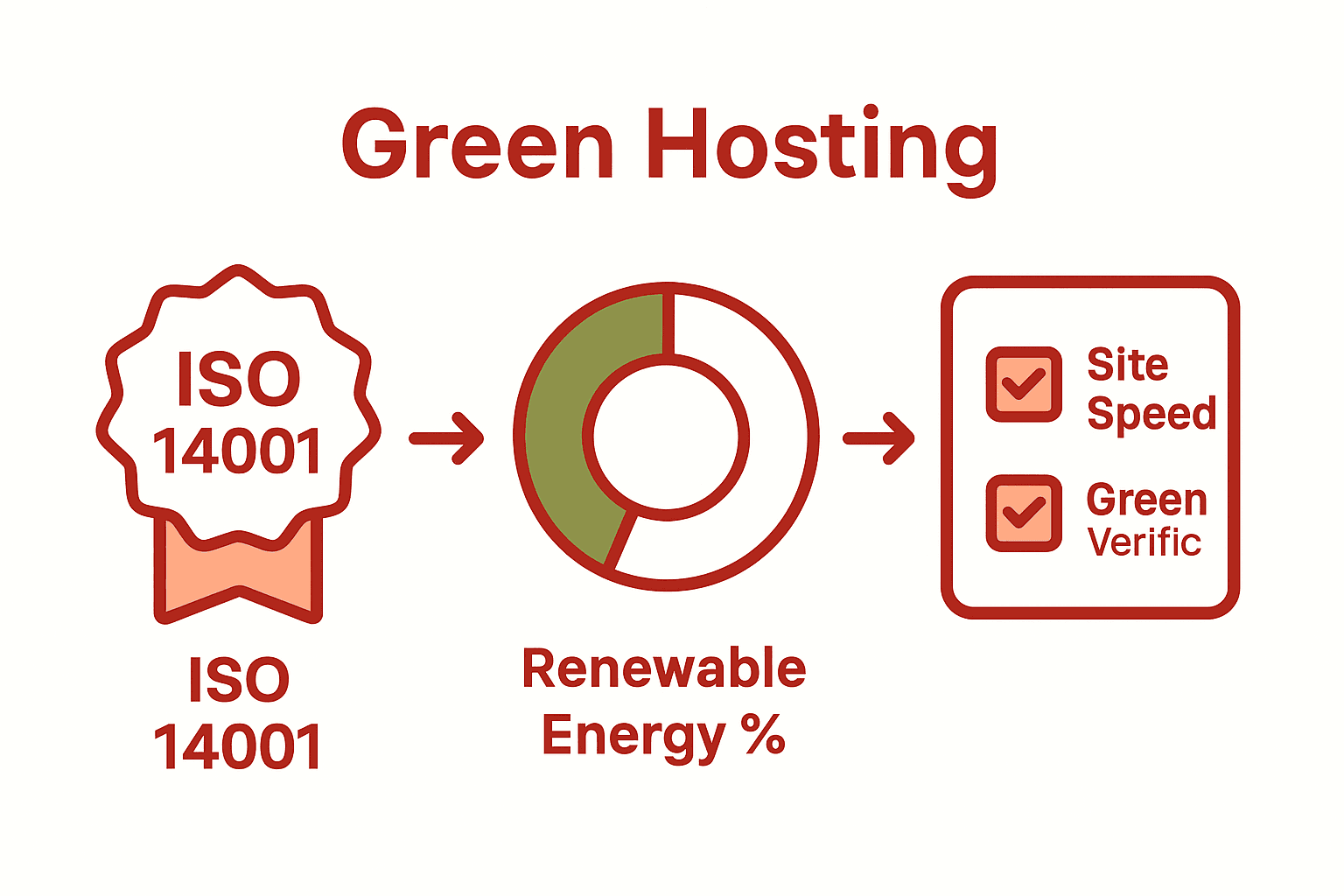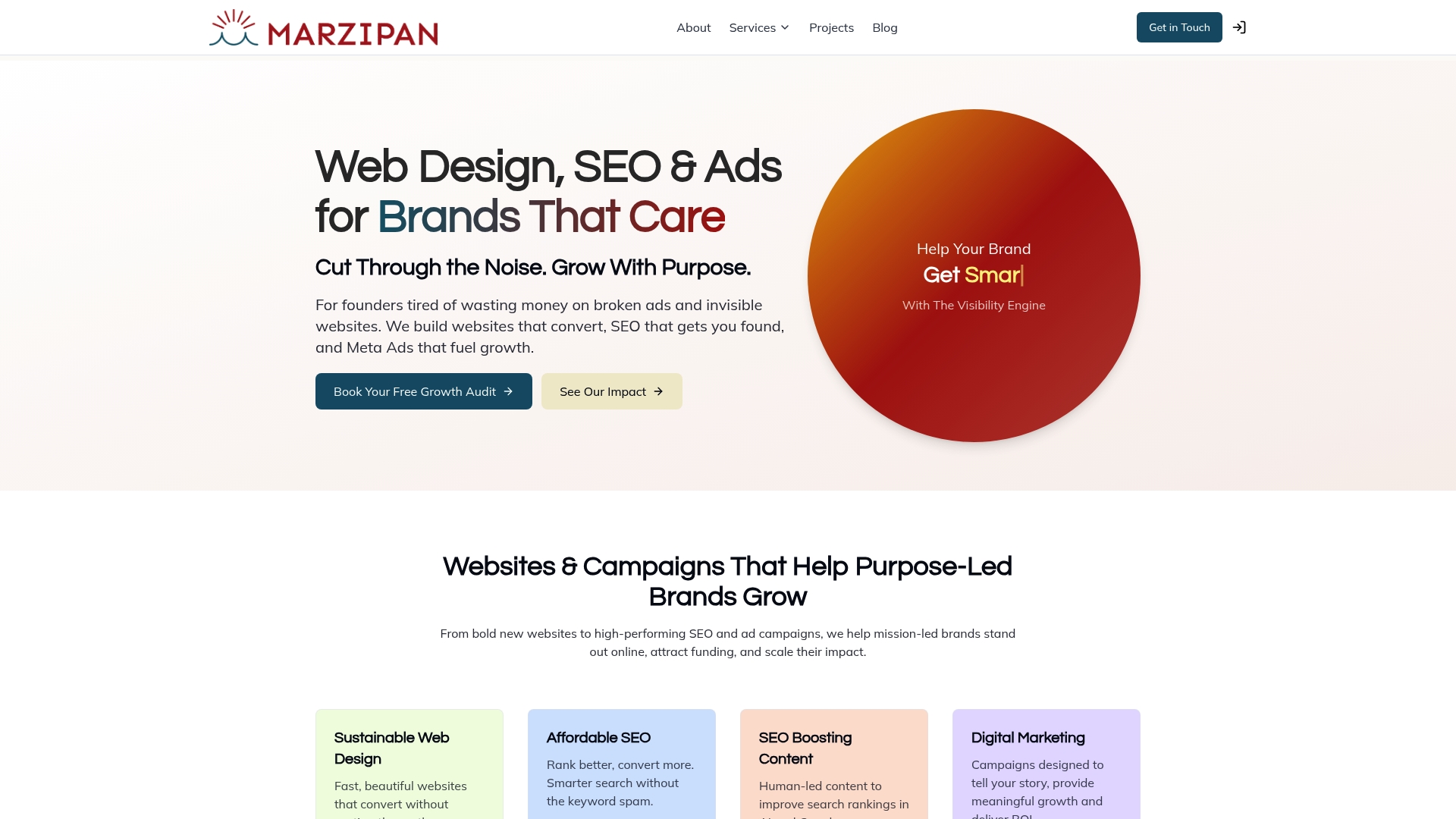Did you know the internet produces about as much carbon as the global aviation industry? For businesses and creators in Australia, choosing a web host that reduces digital emissions matters more than ever. With eco-friendly hosting now offering features like carbon-neutral operations and renewable energy, you can support sustainability while still getting speed, reliability, and transparency for your site.
Table of Contents
- Step 1: Research Trusted Green Hosting Providers In Australia
- Step 2: Evaluate Hosting Features For Sustainability Compliance
- Step 3: Choose The Optimal Green Hosting Plan For Your Needs
- Step 4: Configure Your Website For Efficient Resource Use
- Step 5: Verify Sustainability Credentials And Site Performance
Quick Summary
| Key Point | Explanation |
|---|---|
| 1. Research certified green hosts | Identify Australian hosting providers with verified environmental credentials to ensure sustainability. |
| 2. Assess sustainability features thoroughly | Evaluate providers on renewable energy use, efficiency certifications, and transparent impact reporting. |
| 3. Choose plans balancing performance and sustainability | Select hosting plans that meet both technical needs and environmental commitments, like carbon neutrality. |
| 4. Optimize website resource usage | Implement strategies such as auto-scaling and efficient caching to minimize energy consumption. |
| 5. Verify their sustainability claims | Confirm certifications and request detailed sustainability reports to validate their environmental impact. |
Step 1: Research trusted green hosting providers in Australia
In this crucial step, you’ll learn how to find environmentally responsible web hosting providers across Australia that genuinely support sustainable digital infrastructure. Your goal is to identify hosting services committed to reducing carbon emissions and supporting renewable energy.
Start your research by exploring Australian providers with verified green credentials. According to Canberra Times, GreenGeeks stands out as a leading eco-friendly option, uniquely returning three times the energy it consumes back to the grid through renewable sources. This approach demonstrates a serious commitment to sustainability beyond mere marketing claims.
For local Australian options, Baby Lion Web Design recommends investigating providers with Climate Active certification. This Australian Government sustainability program verifies carbon neutral operations, giving you confidence in the hosting provider’s environmental credentials. Look specifically for providers partnered with verified carbon offset programs or those using renewable energy data centres.
Pro tip: Don’t just accept marketing claims. Request specific documentation about their carbon offset strategies, renewable energy usage, and independent sustainability certifications before making your final selection.
As you progress, prepare to compare the technical specifications and pricing of these green hosting providers, ensuring they meet both your environmental and practical website requirements.
Step 2: Evaluate hosting features for sustainability compliance
In this crucial stage, you will dive deep into understanding and assessing the environmental credentials of potential web hosting providers. Your objective is to carefully examine their sustainability practices and verify their genuine commitment to reducing digital carbon footprints.
The Sustainability Awards highlights key indicators of genuine green hosting providers which include utilising 100% renewable energy sources and holding critical environmental certifications like Green-e or ISO 14001. Look for providers demonstrating transparent environmental impact reporting and implementing advanced energy-efficient technologies in their data centres.
According to Retzor, sustainable hosting goes beyond simple energy consumption. Seek providers offering comprehensive sustainability features such as detailed environmental reporting, renewable energy integration and advanced efficiency technologies that optimise performance while minimising energy consumption.
Pro tip: Request specific documentation about their carbon offset strategies including actual renewable energy percentages, cooling system efficiency and verified sustainability certifications. Don’t settle for generic environmental claims.

As you progress, prepare to compare these sustainability metrics alongside traditional hosting performance indicators to ensure you select a provider that meets both your environmental and technical website requirements.
Step 3: Choose the optimal green hosting plan for your needs
In this critical stage, you will select a green hosting plan that balances your technical requirements with environmental sustainability. Your goal is to find a hosting solution that supports both your website performance and your commitment to reducing digital carbon emissions.
According to Canberra Times, selecting a green hosting plan goes beyond environmental credentials. Consider key technical factors including speed, uptime guarantees, and quality of customer support alongside the provider’s sustainability commitment. Look for providers like GreenGeeks that demonstrate a genuine approach to eco friendly hosting.
Environmentarian suggests that choosing a carbon neutral provider can actually enhance your brand’s environmental reputation. Seek out hosting plans that use 100% renewable energy and transparently report their carbon offset strategies. This approach not only supports sustainable infrastructure but also signals your organisation’s environmental values to potential customers and stakeholders.
Pro tip: Create a detailed comparison spreadsheet that tracks both technical specifications and sustainability metrics. This will help you objectively evaluate which green hosting plan delivers the best balance of performance and environmental responsibility.
As you move forward, prepare to review your shortlisted hosting providers in detail and make an informed decision that aligns with your website needs and sustainability goals.
Step 4: Configure your website for efficient resource use
In this crucial stage, you will optimise your website’s performance while minimising its environmental impact. Your primary objective is to implement intelligent resource management strategies that reduce energy consumption without compromising website functionality.
Site Manage emphasises the importance of responsible resource allocation. This involves carefully managing server resources, implementing hardware recycling practices, and minimising electronic waste through thoughtful disposal strategies. Consider choosing hosting providers that demonstrate a commitment to sustainable infrastructure and responsible technology management.
According to Retzor, advanced efficiency technologies play a critical role in sustainable web hosting. Implement strategies such as auto-scaling, intelligent caching mechanisms, and resource optimization techniques that dynamically adjust server usage based on real-time traffic demands. These approaches can significantly reduce your website’s overall energy consumption while maintaining optimal performance.
Pro tip: Regularly audit your website’s resource usage and eliminate unnecessary plugins, compress images, and streamline code to reduce computational requirements.
As you progress, prepare to continually monitor and refine your website’s efficiency, ensuring you maintain a lean and environmentally responsible digital presence.
Step 5: Verify sustainability credentials and site performance
In this crucial verification stage, you will thoroughly assess your chosen green hosting provider’s environmental claims and ensure your website maintains optimal performance. Your goal is to validate sustainability credentials while confirming technological reliability.
The Sustainability Awards recommends looking for specific certifications that demonstrate genuine environmental commitment. Seek out providers holding internationally recognised credentials such as Green-e or ISO 14001. These certifications indicate robust environmental management practices and provide transparent documentation of sustainability efforts. Pay close attention to detailed environmental impact reports and partnerships with reputable environmental organisations.
According to Retzor, sustainable hosting services now offer comprehensive environmental impact reporting. Request verifiable data on carbon savings, renewable energy consumption, and specific sustainability metrics. These reports not only support your corporate sustainability goals but also provide stakeholders with transparent insights into your digital infrastructure’s environmental performance.
Pro tip: Create a systematic checklist to evaluate potential hosting providers.
 Include technical performance benchmarks alongside sustainability metrics to ensure you are not compromising website functionality for environmental credentials.
Include technical performance benchmarks alongside sustainability metrics to ensure you are not compromising website functionality for environmental credentials.
As you complete this verification process, you will be well positioned to confidently select a green hosting solution that aligns with both your technical requirements and environmental values.
Embrace Sustainable Web Hosting with Confidence
Choosing truly green website hosting can be overwhelming. The article highlights common challenges like verifying carbon offset strategies and balancing technical performance with genuine environmental responsibility. We understand the frustration of sifting through vague sustainability claims when your mission demands authentic impact.
At Marzipan, we specialise in building sustainable websites tailored for mission led businesses that want to reduce their digital carbon footprint without sacrificing site speed or reliability. Our holistic approach covers everything from optimising resource use to amplifying your environmental values through targeted SEO and Meta ads. You no longer need to compromise between ethical hosting and business growth.
Take the next step today and transform your online presence into a powerful force for good.

Explore how we can support your sustainable journey by visiting our main site. Discover insightful strategies for mission led marketing and website creation engineered for meaningful impact. Don’t wait to make your digital footprint greener and your message stronger.
Frequently Asked Questions
How do I find trusted green website hosting providers?
Start by researching hosting providers that have verified green credentials, such as those certified by recognized sustainability programs. Look for companies that utilize renewable energy and demonstrate transparent carbon offset strategies to ensure they are genuinely committed to sustainability.
What features should I evaluate for sustainability compliance in hosting?
Assess the environmental impact of potential hosting providers by checking if they use 100% renewable energy sources and hold certifications like Green-e or ISO 14001. Request documentation that outlines their sustainability practices to ensure they are actively reducing their carbon footprint.
How can I choose the right green hosting plan for my website?
Select a green hosting plan that meets your technical requirements such as speed and uptime, while also ensuring it aligns with your sustainability goals. Create a comparison sheet to evaluate technical specifications alongside environmental metrics, helping you to make an informed choice.
What strategies can I implement to configure my website for efficient resource use?
Optimizing your website involves managing server resources effectively and reducing unnecessary energy consumption. Consider techniques like auto-scaling and intelligent caching, and regularly audit your website to eliminate excess plugins or streamline code for improved efficiency.
How do I verify a hosting provider’s sustainability claims and site performance?
Validate a hosting provider’s environmental claims by looking for recognized certifications and detailed environmental impact reporting. Create a checklist that includes both performance metrics and sustainability credentials to ensure you select a provider that meets both your website functionality and environmental values.
What are advanced efficiency technologies in green hosting?
Advanced efficiency technologies aim to reduce energy consumption while enhancing performance. Look for features such as intelligent caching and dynamic resource adjustment to lower your website’s energy use without sacrificing speed or reliability.